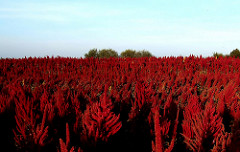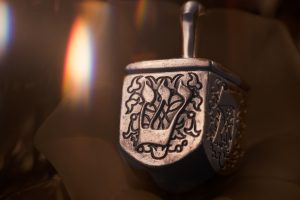Becoming increasingly prevalent among bible students is the realization that the key to proper interpretation of the scriptures is found in understanding the Hebraic nature of the accounts themselves. When embarking on scripture study it should be kept in mind that the Bible is a Hebrew book, written by Hebrew authors, within the confines of a Hebrew culture. As such, it is imperative for the bible student to understand Hebrew thought and imagery as well as Hebrew customs and traditions in order to fully comprehend and appreciate God’s Holy Word.
In this writing, we will further develop this concept by giving an example from Professor Marvin Wilson’s outstanding book, Our Father Abraham, of the enhanced depth of understanding that may be obtained from scripture by the application of Hebrew thought and culture.1 Verses of scripture which otherwise are seemly straightforward can be enhanced, and their meaning greatly expanded, when an understanding of Hebrew culture is applied. A beautiful example of this is found in the first chapter of Isaiah.
As the book of Isaiah opens, we find the prophet calling the people of Judah to repentance, pleading with them to forsake their sinful ways and return to the LORD their God. In verse 18, Isaiah uses beautiful Hebrew poetry and imagery in assuring the people that God will truly forgive them and wash away their sins if they will but repent.
“Come now and let us reason together, saith the LORD;
though your sins be as scarlet,
they shall be white as snow;
though they be red like crimson,
they shall be as wool”
While the meaning of verse 18 is clear, a new layer of appreciation may be gained by understanding certain aspects of ancient Near Eastern culture and Hebraic imagery. The Hebrew word for “crimson” used in verse 18 is tola, and has a twofold meaning. The primary meaning of this Hebrew word is “worm”. The secondary meaning pertains to the vivid red color, “crimson”. The secondary meaning evolved in ancient Israel as a result of word association. In the Mediterranean area of the ancient Near East, a brilliant scarlet or crimson dye was derived from a specific type of insect or worm (Coccus Ilicis) that infested the Kermes Oak tree. When crushed and placed in hot water, this insect produced a brilliant crimson color which was permanent and colorfast. Thus the word “tola” became associated with the color crimson.
Isaiah’s message uses beautiful Hebraic imagery to describe the power of God’s insurmountable love and forgiveness for His sinful nation. Just as the ancient crimson dye produced an indelible stain upon the cloth, so the sins of the people appeared to be a permanent stain upon their lives, incapable of being removed. Yet through the cleansing power of God’s eternal mercy, the seemingly permanent stain of sin could be washed clean, allowing His people to once again enter into His presence as spotless and pure as naturally white undyed wool.
God’s glorious declaration remains applicable for us today, even as it was for the nation of Judah during Isaiah’s day. God is calling us to repentance; assuring us that even though our sins are red, permanent as the crimson dye of the tola, He is able to forgive our sin, purify our hearts, and renew our lives through the atoning death and resurrection of His Only Begotten Son.
Isaiah 1:18, an example of God’s call to repentance and promise of total forgiveness; beautifully conveyed by Isaiah, and enhanced by application of Hebrew culture and imagery.




